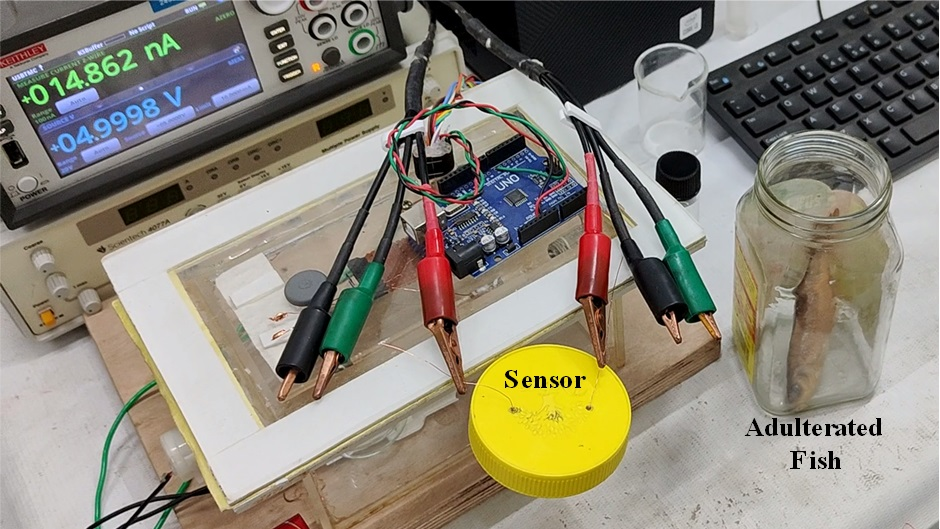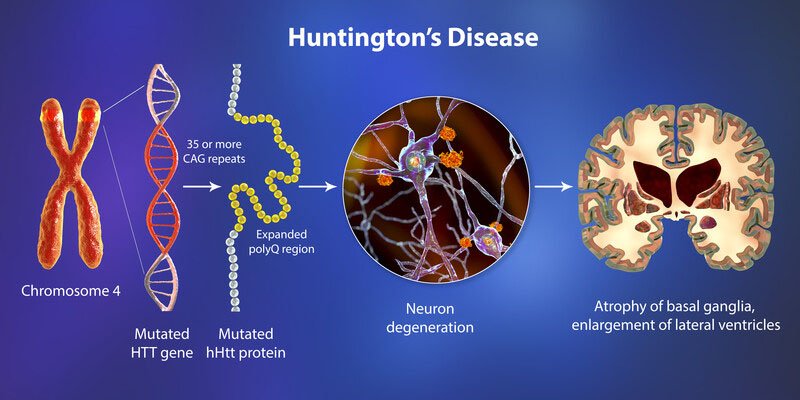A New Discovery: Unveiling an Underwater Mountain Range in the Southern Ocean (India Today)

- 28 Dec 2023
Why is it in the News?
Scientists have discovered an ancient underwater mountain range hidden within the world's strongest ocean current, the Antarctic Circumpolar Current.
Context:
- During a recent research expedition, scientists discovered a previously unknown mountain range deep beneath the Southern Ocean’s surface.
- Using state-of-the-art sonar technology, researchers were able to map out the underwater landscape with astonishing accuracy, revealing a vast range of peaks, ridges, and valleys.
- This newfound mountain range spans hundreds of miles and is estimated to be millions of years old.
- Geological Significance: This discovery holds immense importance for our understanding of the Earth’s geological history.
- The underwater mountain range provides key evidence of plate tectonics and the movement of Earth’s crust, as well as the formation of new landmasses.
- By studying the composition and structure of these underwater formations, scientists will be able to gain insights into the geological processes that have shaped our planet over millions of years.
- Moreover, the discovery raises intriguing questions about the relationship between underwater mountains and the surface landscapes they may be connected to.
- Researchers are eager to investigate whether similar mountain ranges exist on land and whether they share a common origin.
- Implications for Climate and Ecosystems: The newfound underwater mountain range also has significant implications for climate and marine ecosystems.
- These underwater peaks can act as barriers, influencing ocean currents and affecting nutrient distribution.
- Understanding the impact of these formations on ocean dynamics is crucial for predicting climate patterns and better managing marine resources.
- Additionally, these underwater mountains create a unique habitat for a diverse range of marine species.
- The ridges and valleys provide sheltered zones where marine life can thrive, with the potential for new species discoveries.
- Protecting these habitats will be critical in preserving the delicate balance of marine ecosystems.
About the Southern Ocean:
- The Southern Ocean, also referred to as the Antarctic Ocean is one of the Earth's five major ocean basins.
- Its formation traces back approximately 34 million years when Antarctica and South America underwent a gradual separation, resulting in the creation of the Drake Passage.
- This passage, situated between the tip of the Antarctic Peninsula and South America, delineates the Southern Ocean from the Pacific, Atlantic, and Indian Oceans, encompassing their tributary seas surrounding Antarctica below the 60° S latitude.
- Physiography: The ocean floor structure features a continental shelf, typically less than 160 miles (about 260 km) wide, expanding to a maximum width exceeding 1,600 miles (2,600 km) near the Weddell and Ross seas.
- Renowned for its robust winds, intense storms, marked seasonal variations, and frigid temperatures, the Southern Ocean is predominantly influenced by the Antarctic Circumpolar Current (ACC).
- This current, the longest, strongest, and deepest-reaching on Earth, follows a clockwise circulation around the continent, surpassing all others in the volume of water it transports globally.
- Biodiversity: The Southern Ocean sustains diverse flora and fauna, with a majority of marine life relying on the nutrient-rich phytoplankton found in the Antarctic Convergence.
- Notable species include whales, penguins, orcas, and seals, contributing to the region's rich biodiversity.
A new non-invasive formaldehyde sensor can detect adulterated fish at room temperature (DST GOI)

- 28 Dec 2023
Why is it in the News?
A new low-cost sensor made of metal oxide nanoparticles-reduced graphene oxide composite can detect formalin adulteration in fishes at room temperature in a non-invasive way. The sensor shows long-term stability with a low detection limit.
Context:
- A sensor designed for the detection of formalin in fish has been developed by the Nanomaterials and Nanoelectronics Laboratory at Guwahati University, Assam.
- The formalin sensor utilizes a composite of tin oxide-reduced graphene oxide, synthesized through a process involving the wet chemical approach for Graphene Oxide (GO) and the hydrothermal route followed by calcination for the tin oxide-reduced graphene oxide composite (rGO-SnO2).
- Testing of the sensor has been conducted both at the laboratory scale and on fish procured from the fish markets in the Guwahati region, specifically targeting potential adulteration.
- This groundbreaking research has received support from DST-PURSE (Promotion of University Research and Scientific Excellence) and has been documented in the journal ACS Appl. Nano Mater.
- Research Support: The research behind this innovative sensor is backed by DST-PURSE (Promotion of University Research and Scientific Excellence).
About Non-Invasive Formaldehyde Sensor:
- This non-invasive formaldehyde sensor incorporates a composite of tin oxide-reduced graphene oxide (rGO-SnO2) as its key materials.
- While reduced graphene oxide (rGO) has been widely utilized for detecting various toxic gases and volatile organic compounds (VOCs), tin oxide (SnO2) has demonstrated notable efficacy in formaldehyde detection, both in its pristine form and when combined with different compounds, including graphene.
- This combination is favoured for its heightened stability and sensitivity to low concentrations of formaldehyde.
- Synthesis Process: The fabrication process involves a wet chemical approach for the production of graphene oxide (GO), followed by the hydrothermal route and subsequent calcination to synthesize the tin oxide-reduced graphene oxide composite (rGO-SnO2).
- Comparison with Existing Sensors: Unlike commercial formalin sensors for fish, which are primarily electrochemical-based or colorimetric-based and often invasive, this novel sensor, made from metal oxide nanoparticles and reduced graphene oxide, offers a cost-effective and non-invasive method for detecting formalin adulteration in fishes at room temperature.
- Challenges with Existing Sensors: Traditional electrochemical sensors, though widely used, tend to be expensive, and colourimetric sensors, while more cost-effective, share the invasive nature of their electrochemical counterparts. Both face challenges related to low-level and selective detection.
- Significance of the New Sensor: The development of gas sensors based on 2D materials, such as graphene, opens up new possibilities for the effective detection of toxic vapours at room temperature.
- These sensors hold promise for accurately detecting formalin emanating from adulterated food products.
What is Formaldehyde?
- Formaldehyde (CH?O) is an odorless, colorless gas with high toxicity and flammability under standard room temperature conditions.
- Primary Applications:
- Production of fertilizers, paper, plywood, and certain resins.
- Utilized as a food preservative.
- Found in glues, resins, dyes, textiles, disinfectants, building materials, automotive components, embalming processes, and laboratory settings.
- Incorporated into household items like antiseptics, medications, and cosmetics.
- Potential Health Effects:
- Exposure to formaldehyde may result in irritation of the skin, throat, lungs, and eyes. Additionally, formaldehyde is recognized as a carcinogenic substance.
For Huntington’s disease clues, scientists are looking in fruit flies (The Hindu)

- 28 Dec 2023
Why is it in the News?
Scientists at the University of Szeged in Hungary have made significant progress in advancing our understanding of Huntington's disease through the study of fruit flies.
What is Huntington’s Disease?
- Huntington’s disease (HD) is a brain disorder that is passed down in families from generation to generation.
- It is caused by an error in the DNA instructions that build our body and keep it running.
- DNA is made up of thousands of genes, and people with HD have a small defect in a gene called huntingtin.
- Over time, this error causes damage to the brain and causes symptoms of Huntington’s disease.
- Huntington’s disease causes a person’s physical, mental and emotional abilities to deteriorate, usually during their prime at work, and there is currently no cure.
- Most people start developing symptoms in adulthood, between the ages of 30 and 50, but HD can also occur in children and young adults.
- Huntington’s disease is known as a family disease because each child of a parent with HD has a 50/50 chance of inheriting the defective gene.
Huntington’s Disease Symptoms:
- Symptoms of Huntington’s disease can vary greatly from person to person but typically include:
- Personality changes, mood swings and depression
- Forgetfulness and impaired judgment
- Unsteady gait and involuntary movements (chorea)
- Slurred speech, difficulty swallowing and significant weight loss.
- Symptoms typically worsen over the course of 10 to 25 years, affecting the ability to reason, walk, and speak.
- The person with HD or their friends and family may notice difficulty planning, remembering, and concentrating on the task.
- They can develop mood swings such as depression, anxiety, irritability, and anger.
- Most people with Huntington’s disease become “fidgety” and develop facial and limb movements known as chorea, which they cannot control.
- The symptoms of Huntington’s disease are sometimes described as ALS, Parkinson’s, and Alzheimer’s all at the same time.
Huntington’s Disease Treatment:
- No treatment can stop or reverse the progression of Huntington’s disease.
- Antipsychotic medications can relieve chorea and help control hallucinations, delusions, and violent outbursts.
- Huntington’s disease causes disability that gets worse over time.
How the PM JANMAN scheme can help Particularly Vulnerable Tribal Groups (Indian Express)

- 28 Dec 2023
Why is it in the News?
Recently, the Union Cabinet approved the Pradhan Mantri Janjati Adivasi Nyaya Maha Abhiyan (PM JANMAN), aimed at providing PVTG households and habitations with basic facilities such as safe housing, clean drinking water and sanitation, improved access to education, health and nutrition, road and telecom connectivity, and sustainable livelihood opportunities.
What is the PM-JANMAN Scheme?
- PM-JANMAN is a government initiative aimed at integrating tribal communities into the mainstream of development.
- The scheme, comprising both Central Sector and Centrally Sponsored Schemes, will be executed collaboratively by the Ministry of Tribal Affairs, State governments, and Particularly Vulnerable Tribal Groups (PVTG) communities.
Key Features:
- Implementation Scope: The scheme focuses on 11 critical interventions managed by 9 line Ministries, ensuring the effective execution of existing schemes within villages inhabited by PVTGs.
- Sectoral Coverage: PM-JANMAN spans various sectors, encompassing initiatives such as ensuring safe housing through the PM-AWAS Scheme, access to clean drinking water, improved healthcare, education, nutrition, road and telecommunications connectivity, and the promotion of sustainable livelihoods.
- Special Initiatives: The plan includes specific initiatives such as the establishment of Van Dhan Vikas Kendras to facilitate the trade of forest produce, deployment of off-grid solar power systems for 1 lakh households, and installation of solar street lights.
- Objectives: PM-JANMAN aims to enhance the quality of life and overall well-being of PVTGs by addressing the various forms of discrimination and exclusion they face.
- Additionally, it recognizes and values the unique and significant contributions of PVTGs to both national and global development.
How Does PM-JANMAN Differ?
- Distinctive Identification and Recognition: Criticism has arisen over outdated criteria for identifying Particularly Vulnerable Tribal Groups (PVTGs).
- The presence of repetitive names and discrepancies in recognition across states has led to confusion and exclusion.
- Addressing these concerns, PM-JANMAN introduces a Human Development Index for PVTGs, aiming to enhance proper identification and tailored development planning based on updated and comprehensive data.
- Participatory Bottom-Up Approach: In a departure from the 'one-size-fits-all' approach, PM-JANMAN adopts customised strategies that respect the unique needs and priorities of PVTGs.
- Emphasizing a participatory bottom-up approach, the scheme actively involves PVTGs in decision-making processes, particularly regarding land rights, social inclusion, and cultural preservation.
- Livelihood Promotion: PM-JANMAN focuses on sustainable livelihoods for PVTGs by providing skills training, essential resources such as land and credit, and implementing the Forest Rights Act (FRA) to secure land titles, particularly under Section 3(1)(e) for primitive tribal groups and pre-agricultural communities.
- The scheme encourages the preservation of cultural heritage through the promotion of traditional technologies and skill enhancement via industry partnerships.
- Health, Nutrition, and Education: To address the unique challenges faced by PVTGs, PM-JANMAN incorporates Mobile Medical Health Units for healthcare outreach in remote areas.
- The scheme also emphasizes cultural sensitivity in education by integrating PVTG culture and language into the curriculum, providing transportation, and training teachers about PVTG cultural contexts.
- Infrastructure Development: Recognizing that PVTG habitations may not meet standard criteria for existing schemes, PM-JANMAN relaxes guidelines for infrastructure schemes like Pradhan Mantri Grameen Sadak Yojana, Pradhan Mantri Awas Yojana, and Jal Jeevan Mission.
- This ensures improved access to housing, water, sanitation, electricity, and connectivity for PVTGs.
What are Particularly Vulnerable Tribal Groups (PVTGs)?
- PVTGs represent the most vulnerable segments within tribal communities, facing heightened challenges in various aspects of development.
- Due to their distinct vulnerabilities, more developed and assertive tribal groups often receive a significant portion of tribal development funds, necessitating a focused allocation of resources for the advancement of PVTGs.
- The designation of PVTGs dates back to 1975 when, based on the recommendations of the Dhebar Commission, the Government of India identified 52 tribal groups with unique vulnerabilities.
- Presently, there are 75 PVTGs among the 705 Scheduled Tribes in India.
- Geographically, PVTGs are distributed across 18 states and one Union Territory, as per the 2011 census, with Odisha having the highest number, exceeding 2.5 lakh individuals.
- Distinctive Characteristics of PVTGs:
- Stagnant or declining trends.
- Primarily pre-agricultural practices.
- Exceptionally low educational attainment.
- Predominantly subsistence level, indicating a reliance on basic, self-sustaining economic activities.
How Japan’s moon-landing attempt in January will affect Chandrayaan 4 (The Hindu)

- 28 Dec 2023
Why is it in the News?
Recently, the “Moon Sniper” lander developed by Japan’s space agency successfully entered lunar orbit.
About the Smart Lander for Investigating Moon (SLIM) Mission:
- The Smart Lander for Investigating Moon (SLIM) is a spacecraft crafted and launched by the Japan Aerospace Exploration Agency (JAXA) on September 7, 2023, from the Tanegashima spaceport.
- Remarkably lightweight at 590 kg, SLIM embarked on its mission alongside XRISM, a cutting-edge X-ray space telescope, on an H-2A rocket.
- Upon launch, SLIM assumed an elliptical orbit around the moon within a span of approximately three minutes.
- Notably, the apogee (farthest point) of this orbit extends to 4,000 km, while the perigee (closest point) hovers at 600 km above the lunar surface.
Objectives of SLIM on the Lunar Surface:
- Before its lunar descent, SLIM is programmed to release two compact rovers known as Lunar Excursion Vehicle (LEV) 1 and 2.
- Working in tandem with SLIM, LEV-1, and LEV-2 are tasked with conducting a comprehensive study of the lunar surface near the designated landing area.
- Their mission encompasses the collection of temperature and radiation readings, as well as endeavours to investigate the moon's mantle.
- This collaborative effort by SLIM and its rovers aims to enhance our understanding of lunar conditions and contribute valuable insights to lunar exploration.
What is the XRISM Mission:
- The X-Ray Imaging and Spectroscopy Mission (XRISM) is a collaborative effort between the Japan Aerospace Exploration Agency (JAXA) and the National Aeronautics and Space Administration (NASA), with valuable contributions from the European Space Agency (ESA).
- Mission Objective: XRISM is designed to observe X-rays emanating from deep space, aiming to precisely identify their wavelengths with an unprecedented level of accuracy.
- The mission employs cutting-edge spectroscopy techniques to measure changes in the brightness of celestial objects across various wavelengths.
- Technological Advancements: Leveraging state-of-the-art spectroscopy, XRISM can detect X-rays within a broad energy spectrum ranging from 400 to 12,000 electron volts.
- To provide a perspective, the energy of visible light typically falls within the 2 to 3 electron volts range.
- This expanded energy range enables astrophysicists to gain novel insights into some of the universe's most dynamic regions, vast structures, and entities characterized by formidable gravitational forces.
